
Leopold II was the second King of the Belgians from 1865 to 1909 and, through his own efforts, the owner and absolute ruler of the Congo Free State from 1885 to 1908.

The Belgian Congo was a Belgian colony in Central Africa from 1908 until independence in 1960. The former colony adopted its present name, the Democratic Republic of the Congo (DRC), in 1964.

Baudouin, Dutch name Boudewijn, was King of the Belgians from 1951 until his death in 1993. He was the last Belgian king to be sovereign of the Congo.

Ostend is a coastal city and municipality, located in the province of West Flanders in the Flemish Region of Belgium. It comprises the boroughs of Mariakerke, Raversijde, Stene and Zandvoorde, and the city of Ostend proper – the largest on the Belgian coast.

The Congo Free State, also known as the Independent State of the Congo, was a large state and absolute monarchy in Central Africa from 1885 to 1908. It was privately owned by and in a personal union with Leopold II of Belgium; it was not a part of Belgium, of which he was the constitutional monarch. Leopold was able to seize the region by convincing other European states at the Berlin Conference on Africa that he was involved in humanitarian and philanthropic work and would not tax trade. Via the International Association of the Congo, he was able to lay claim to most of the Congo Basin. On 29 May 1885, after the closure of the Berlin Conference, the king announced that he planned to name his possessions "the Congo Free State", an appellation which was not yet used at the Berlin Conference and which officially replaced "International Association of the Congo" on 1 August 1885. The Congo Free State operated as a separate nation from Belgium, in a personal union with its King, privately controlled by Leopold II, although he never personally visited the state.

King Leopold's Ghost: A Story of Greed, Terror and Heroism in Colonial Africa (1998) is a best-selling popular history book by Adam Hochschild that explores the exploitation of the Congo Free State by King Leopold II of Belgium between 1885 and 1908, as well as the large-scale atrocities committed during that period. The book, also a general biography of the private life of Leopold, succeeded in increasing public awareness of these crimes in recent decades.
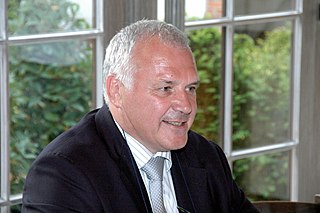
Jean-Marie Louis Dedecker is a Belgian politician.
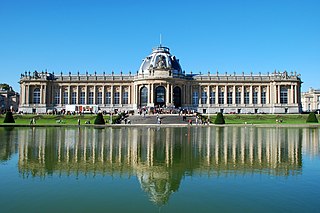
The Royal Museum for Central Africa or RMCA, also officially known as the AfricaMuseum, is an ethnography and natural history museum situated in Tervuren in Flemish Brabant, Belgium, just outside Brussels. It was built to showcase King Leopold II's Congo Free State in the International Exposition of 1897.

The Belgian colonial empire consisted of overseas colonies and protectorates controlled by Belgium. During its colonisation era, Belgium controlled several colonies/concessions during its history, the Belgian Congo from 1908 to 1960, and Ruanda-Urundi from 1922 to 1962. It also had a small concession in China and was a co-administrator of the Tangier International Zone in Morocco. There was a colony in Guatemala between 1843 and 1854.

The Royal Greenhouses of Laeken are a vast complex of monumental heated greenhouses in the park of the Royal Palace of Laeken, Belgium. The historic complex contains tropical, subtropical and cold greenhouses.

Baron Thomas Jules Vinçotte (1850–1925) was a Belgian sculptor and medallist.
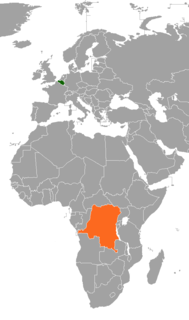
Belgium–Congo relations refers to relations between the Kingdom of Belgium and the Democratic Republic of the Congo. The relationship started with the exploration of the Congo river by Henry Morton Stanley.
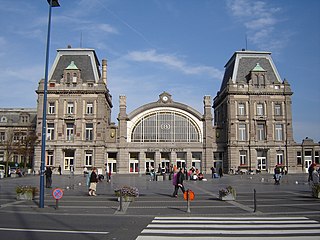
Oostende railway station is located in Ostend in West Flanders, Belgium. The first station in Ostend was opened in 1838 during the reign of Leopold I of Belgium on the former Belgian railway line 62 to Torhout and is now a supermarket. The NMBS station was opened in 1913 during the reign of Albert I of Belgium. The station is designed to connect trains and ferries and is built with Scottish Granite, Bluestone from Soignes and Limestone from Euville. It is constructed in a classical style of architecture inspired by the French architect from the 18th Century François Mansart and the Louis XVI of France style.
Wout Felix Lina Faes is a Belgian professional footballer who plays as centre back for Stade de Reims.
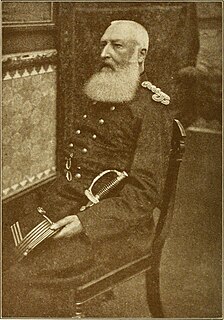
In the period from 1885 to 1908, many well-documented atrocities were perpetrated in the Congo Free State which, at the time, was a colony under the personal rule of King Leopold II of the Belgians. These atrocities were particularly associated with the labour policies used to collect natural rubber for export. Together with epidemic disease, famine, and a falling birth rate caused by these disruptions, the atrocities contributed to a sharp decline in the Congolese population. The magnitude of the population fall over the period is disputed, with modern estimates ranging from 1 million to 15 million.

A statue of King Leopold II of the Belgians was installed in Ekeren, Flanders, Belgium, until 2020. The statue was designed by Belgian sculptor Joseph Ducaju, made of sandstone from Bad Bentheim, and was erected in 1873, eight years into Leopold's reign, as the first statue to commemorate him as king.
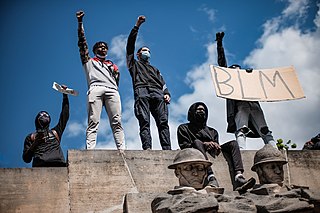
Shortly after protests seeking justice for George Floyd, an African-American who was murdered during a police arrest, began in the United States, people in Belgium protested to show solidarity with Americans and to demonstrate against issues with police or racism. Vigils and protests of up to thousands of participants have taken part nationwide.
A bust of Leopold II of Belgium has been on display in the Zuidpark in Ghent for many years. As awareness of Leopold II's genocidal reign in Congo became widespread, public pressure grew to remove the statues of him in Belgium, and the bust was repeatedly defaced. On June 30, 2020, during the George Floyd protests in Belgium, part of the global George Floyd protests, it was removed from its location, to be stored in a warehouse. The date of its removal was also Congo's independence day.
Belgian apologies to the Congo are the subject of a societal debate in Belgium over the expression of apologies of the role that country has played in the atrocities that have been committed in the Congo Free State and the Belgian Congo between 1885 and 1960, as well as the colony of Ruanda-Urundi (1924–1962).


















